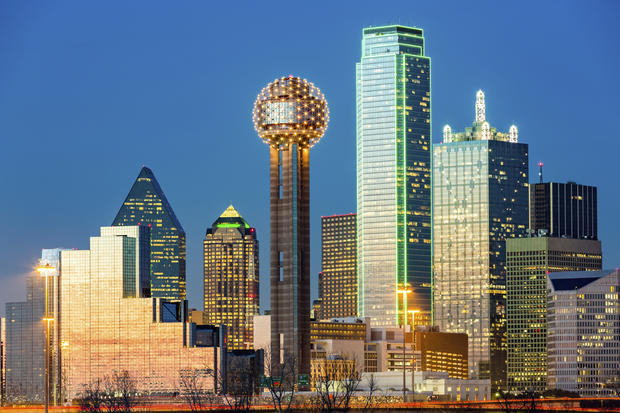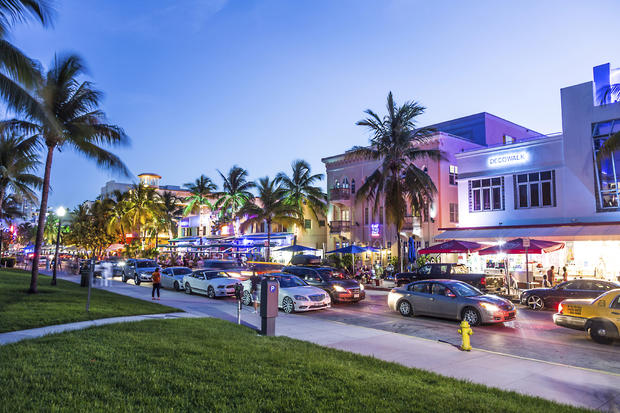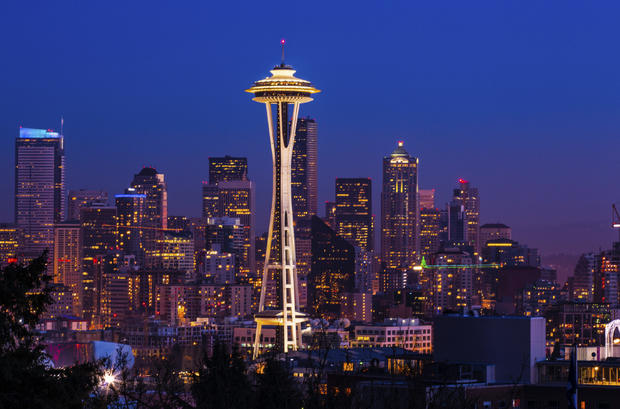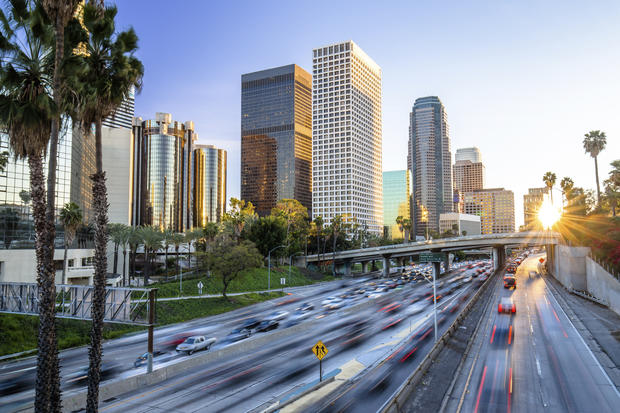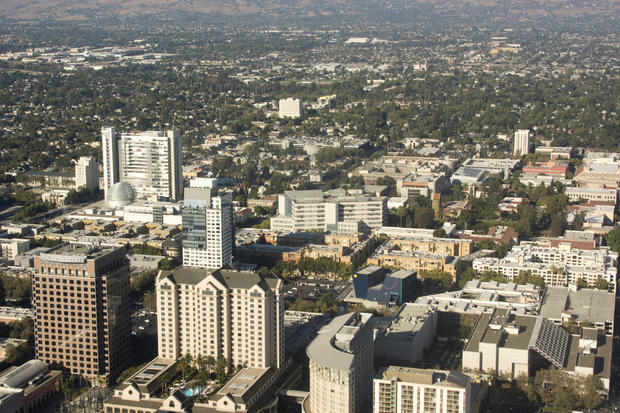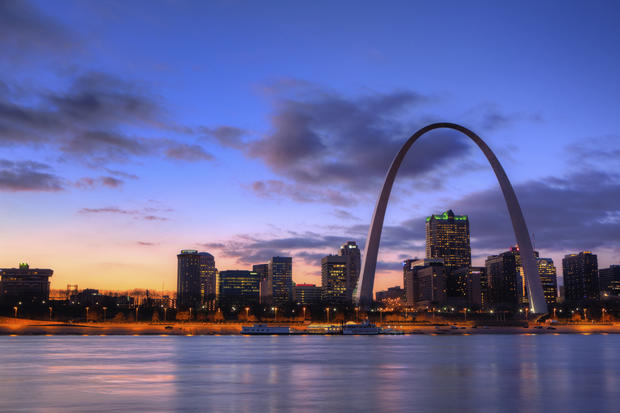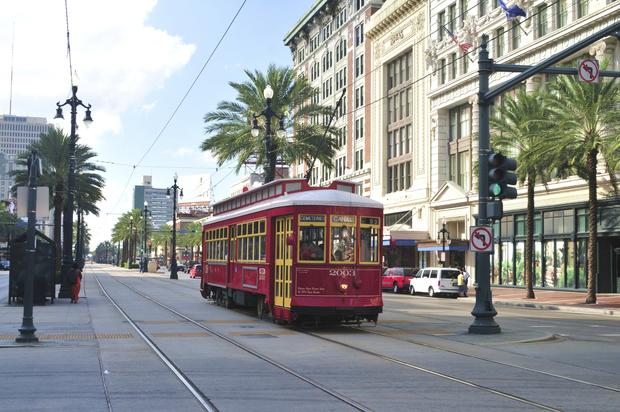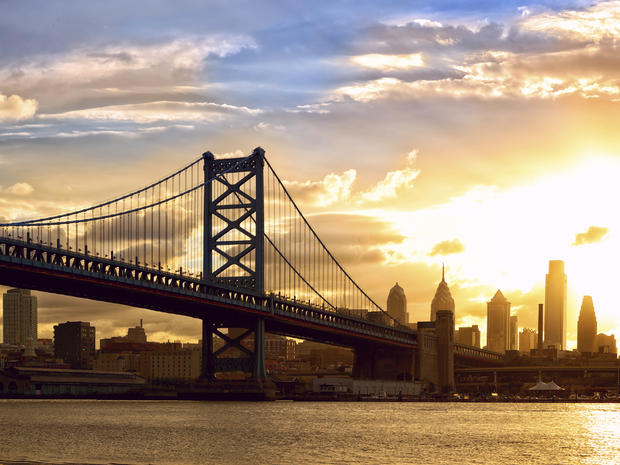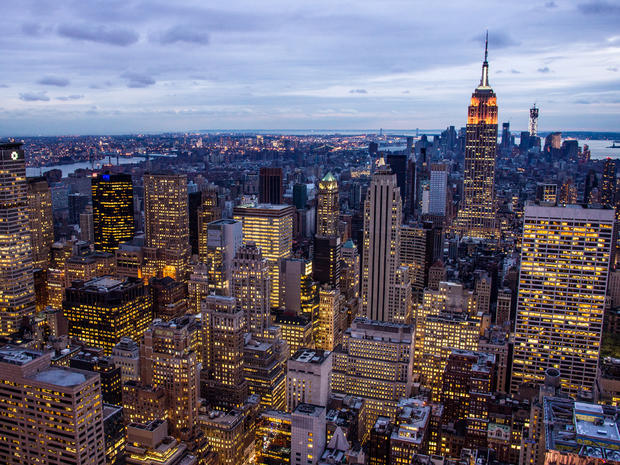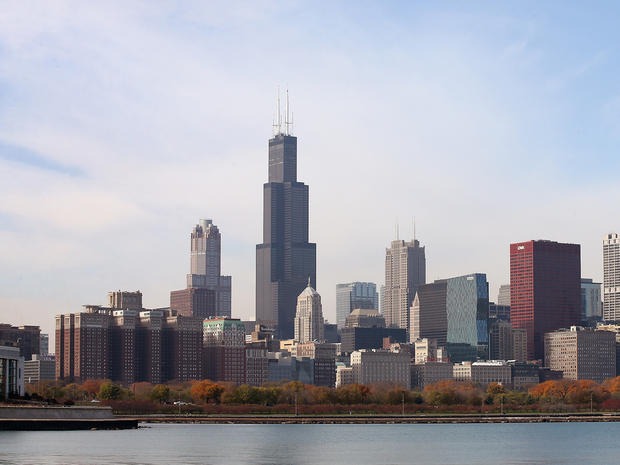10 cities winning -- and losing -- with job creation
Even though the U.S. economy is picking up, not every region is enjoying the same type of growth.
The economy has by now recovered the 8.7 million jobs lost between late 2007 and early 2010, while on average slightly more than 220,000 new jobs have been created each month during the past year.
While that's good news, the fact is that not every city is enjoying it. According to a new report from CareerBuilder, some cities are outpacing the nation's job creation rate, while others are falling behind. Those that are stagnating might encounter problems if employers or workers view the locations as less desirable, although CareerBuilder noted that growth rates can change from year to year.
"Anytime you see a slowdown or stagnation in job growth, it can affect how employers and job seekers perceive the market," said Jennifer Grasz, a spokeswoman for CareerBuilder. Faster-growing cities, on the other hand, may reflect that "employers are confident about their financial situation and prospects. Companies are investing in headcount to grow their business, which will ultimately help to fuel expansion in the local economy."
The research, from CareerBuilder and economic-analysis firm Emsi, considered total job growth across industries for America's 150 most populous cities from 2014 to 2015. The cities' actual job growth was then compared with what would have been expected for that area based on national job growth trends.
Read on to find out which cities are pulling ahead with creating new jobs, and which are falling behind.
Competitive: Miami
This Florida city, with an employee base of 2.48 million, added more than 81,800 new jobs from 2014 to 2015, CareerBuilder found. If Miami mirrored national trends, it would have added only 49,695 new jobs.
While the local economy was strong last year, Southern Florida might face some headwinds in 2016. That's because the strong U.S. dollar means weaker Latin American currencies, which may dry up some business for Miami and the region, which depends on Latin American tourists.
Competitive: Seattle
Home to Amazon (AMZN) and other tech giants, Seattle added slightly more than 78,000 new jobs from 2014 to 2015, or almost double what would have been expected if the city had matched the nation with job creation.
While the economy there is thriving, it hasn't come without some growing pains. Home prices have surged, putting housing beyond the means of many low- and middle-income families. Homelessness has been declared a "state of emergency" after Seattle recorded 2,800 homeless residents, a 21 percent increase from 2014, according to the Seattle Times.
Competitive: Los Angeles
The city of angels added more than 159,000 jobs from 2014 to 2015, outpacing the 120,745 jobs that it was on track to add based on national trends.
Los Angeles, with more than 5.9 million workers, may be best known for its entertainment industry, but the metro area has a diverse economy that includes the largest port in the Western Hemisphere. According to the Los Angeles County Economic Development Corp., Los Angeles County will add about 100,000 new jobs in the coming year.
But like Seattle, Los Angeles is also coping with more expensive housing. Residents need to earn at least $33 an hour, or more than $68,000 annually, to afford a typical apartment in the county, according to the California Housing Partnership.
Competitive: San Jose
It may be no surprise that this Silicon Valley city made the cut, given that it's home to businesses such as eBay (EBAY) and Adobe (ADBE). Between 2014 to 2015, San Jose added 60,716 new jobs, or almost triple what it would have added if it had mirrored national job growth.
But problems are also emerging, such as a dearth of affordable housing and bad traffic. According to the Silicon Valley Business Journal, the earnings gap between the area's top workers and those at the bottom is now the largest ever.
Competitive: Dallas
Things are bigger in Texas, and that includes job growth -- at least in Dallas. The city added more than 112,000 new positions between 2014 to 2015, compared with the roughly 68,000 it should have added if Dallas had tracked the nation.
Still, dark clouds are on the horizon. The decline in oil prices may spell trouble, even though Dallas is more diversified than some other Texas cities. On top of that, the mayor warned last year that the city's high poverty rates might pose an economic threat.
Lagging: St. Louis
This Missouri city of 1.36 million added fewer than 15,500 new jobs from 2014 to 2015. But if it had tracked the nation's job growth, St. Louis should have added almost 28,000 new jobs.
One recent blow to the city was the Rams' announcement that the NFL team would decamp for Los Angeles. The team is leaving the city with a stadium that still has $144 million in debt and maintenance costs, according to Reuters. In arguing for the move, Rams owner Stan Kroenke complained about the city's slow economic growth.
Lagging: New Orleans
A decade after Hurricane Katrina devastated the city, New Orleans is still rebuilding. It lost about 2,500 jobs from 2014 to 2015, instead of gaining almost 12,000 new ones if it had mirrored the U.S. economy.
The disaster was like "a heart attack," Michael Hecht, the CEO of the local economic development agency Greater New Orleans told CBS MoneyWatch last year. While the city has made some progress, it continues to face economic challenges, such as a high poverty rate and slow wage growth.
Lagging: Philadelphia
The city of brotherly love added about 30,900 jobs from 2014 to 2015, or below the 57,502 jobs it should have created according to national job trends.
Philadelphia hasn't yet recovered from the Great Recession, according to a study published last year by the Brookings Institution. Median household income is also below several other large American cities, including Pittsburgh and Baltimore, according to the Pew Trusts. On top of that, compared with 10 other major U.S. cities, Philadelphia has the second-highest percentage of residents between 16 to 64 years old who aren't participating in the labor force, Pew found.
Lagging: New York City
The Big Apple isn't as healthy as it could be when it comes to job growth. The city added about 156,000 new jobs between 2014 to 2015, or almost 31,000 fewer than would have been expected based on national trends.
That might be surprising, given the strength in New York City's economic recovery since the recession. Yet its growth has come with some unintended consequences, such as an increasing divide between the wealthy and the poor, as well as a working-class sector that's losing importance, according to The Atlantic's City Lab.
Lagging: Chicago
The windy city added only 55,443 jobs between 2014 to 2015, or about 37,000 fewer than it would have if Chicago had mirrored the nation's job growth.
Job growth may be slowing because of cuts in factory jobs, according to Crain's Chicago Business. That may remain an issue for Chicago in years to come, given trends in American manufacturing and globalization.
